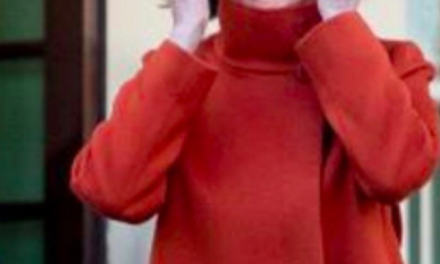
“Tickle?” Gina says with a smile.
I’m about to protest, but already one of the women is smiling back and lightly touching Gina’s wrist. She seems to immediately know she has encountered a child on the autism spectrum and is comfortable with it.
“It’s OK,” she says to me, sensing I’m not sure what to do. “I’m a teacher. And so is my friend.”
They engage Gina for a few minutes. I thank them and tell her to say good-bye before we head into a dressing room so I can try on some clothes.
Gina sits on the little bench in the stall, clearly excited to be hanging with Aunt Nancy and doing “girl” stuff while her mother, who is my sister, and a friend are still out among the racks in the store. Her arms are flapping in joy. On occasion, when I’ve picked her up and she’s in the passenger seat while I drive, the flapping lasts a while – so much glee, like I’ve sprung her from jail.
Oh, to know what’s happening in that brain of hers. My sister says that often and I concur. Sometimes you can’t help but marvel at something she’s figured out on Google Maps and other times you want to cry in frustration as she repeats something you’ve already addressed at least 10 times in the last half hour. It’s all part of the autism.
Once you get through the initial shock upon diagnosis, make your way through the countless Polly Positives telling you everything is going to be “just fine” with her development, and sink your teeth into the reality of what resources are available to you, what’s left is often exhaustion. Parents have just made their way through a maze, often one they’ve had to navigate with little help. If only they didn’t have to also try to educate everyone around them, too.
Enter Julia. She lives on Sesame Street. And I sure hope it’s for a long, long time.
As I watched a recent segment on 60 Minutes about the addition of a Muppet with autism, tears rolled down my face. There were highlights showing Julia flapping her arms, repeating herself, not responding when spoken to, and recoiling from too much noise. All of that was familiar to me. While no two children on the spectrum are the same, those traits are common to many.
Having Elmo and Abby Cadabby, and ultimately Big Bird, interact with Julia in such a matter-of-fact way felt astonishing and instantly valuable. One of the hardest things about watching an autistic child among others her age who are not on the spectrum is seeing their blank looks. They may know to be kind and invite her to hang out with them, but it can still be breathtaking or even heartbreaking to see the communication break down or never get off the ground. They simply don’t know what to do to play with her or talk to her.
The idea of children growing up and watching Julia on Sesame Street is uplifting because it’s about that ability of kids to relate to each other. Much like it’s easier to teach something like a new language to little ones, it makes sense the younger they are the simpler it is to pick up nuances of how to interact with kids who are different from them.
The first time Gina responded to my “How are you?” with “I’m fine, how are you?” I nearly fainted. What a moment. While that may be true of “typical” kids, too, this is a whole different scenario. Its impact is hard to explain, something about the normalcy of it when almost nothing with the child in question has felt remotely normal up to this point.
Recently I was sitting in my parents’ spare room with Gina. I sat on the bed while she lounged in a recliner. She looked at me and said, “Can we talk?” I smiled and said, “Yes, what would you like to talk about?” but all the while I was hiding my surprise that she even asked the question. She had found a way to ask for what she wanted.
Her ability to follow through from there required an understanding of autism, though. Anyone could have answered her the way I did. But what happened next was familiar to only those who know Gina. She began to tell me a story, one she’d been telling me over and over for years. She had gone to the flea market with Mommy and Miss Sally. They’d seen her classmate, Gus, who bought a hat there. Gina got a Hello Kitty ring. Afterwards they ate at a nearby diner and she’d had pancakes and bacon. The End.
Again I craved to know how the autistic mind works. I engaged her the way I always do, by going along with her and prompting familiar responses. That’s gold to an autistic child. Familiarity. Comfort. As if it’s all brand new.
As the storylines on Sesame Street unfold, I hope we’ll see Elmo and Abby Cadabby continue to find inroads with Julia so that little viewers will be unfazed in the presence of an autistic child in their classroom or play group.
I see it as a giant step.





